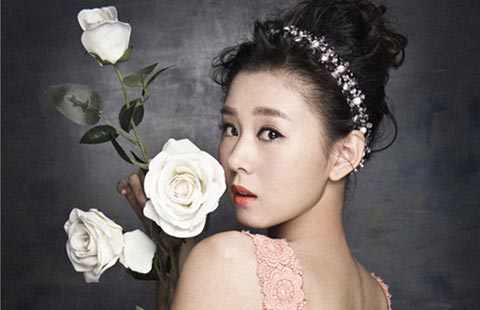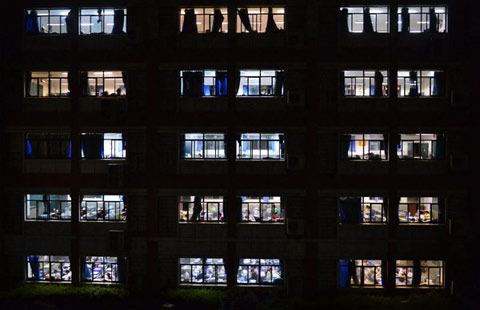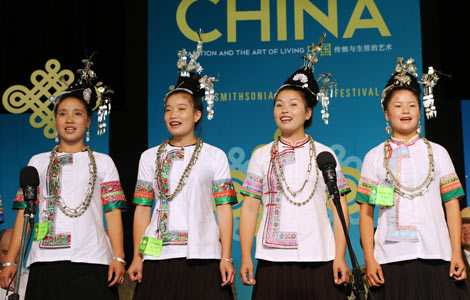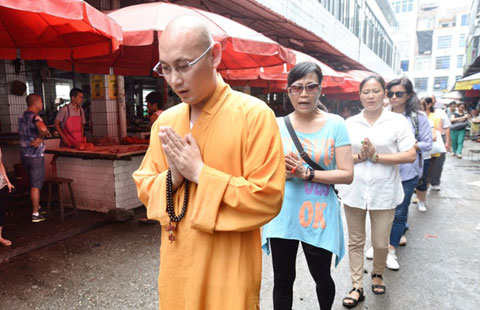Preserving the ancient traditions
Updated: 2014-06-25 07:09
By Peng Yining (China Daily)
|
||||||||
When Li Jianshen founded Sanbao Ceramic Art Institute in 1998, the building in which it is housed was just an old house Li bought from some local farmers in the suburbs of Jingdezhen.
Sixteen years later, the institute is one of the city's most famous centers for ceramics, attracting more than 100 foreign artists every year.
"Sanbao provides artists with a quiet place to work, a chance to learn the ancient Chinese ceramic tradition, and also a rural lifestyle, which is natural and peaceful," said Li.
After graduating from the Jingdezhen Ceramic Institute in the 1990s, Li continued his studies at Alfred University in New York. He said the ceramic arts are well-developed in the US, where at least 300 universities have ceramics departments, and the country has hosted a national ceramics conference annually for more than 20 years.
"My early experiences in the US really opened my eyes," Li said. "At that time, art residencies were well established in the US and many other Western countries, but the concept was still new in China."
Li believes that he was the first person to provide artistic residencies in Jingdezhen, calling them "an experiment by an idealist."
After renovating the old house, Li gradually added more facilities, including a gallery, a dormitory and a museum. The main office of Sanbao sits in a quadrangle decorated with old wood found in abandoned houses. The buildings are connected by a zigzagging stream, and dogs yawn on the moss-covered stone steps.
In Chinese, Sanbao is known as Guo Ji Tao Yi Cun, or the international ceramics village, and has the ambiance of a sleepy Chinese village, albeit one with Wi-Fi and a bar.
"In Sanbao, I can avoid all distractions," said Jessie Lee, a ceramic artist from Grymsdyke Farm, a design, research and fabrication center in Buckinghamshire in the United Kingdom. "Once in a while, artists need to get away from everyday life and focus on their work."
Lee planned to stay for about three months. Every morning at 8 am, she had breakfast with other artists before repairing to her studio to work with materials provided by the institute. She said Sanbao provides a good environment for artists, and also has good communication facilities.
According to Lee, her workshop in the UK has been using 3-D printing technology, but at Sanbao, most of the work, from throwing to glazing, is done by hand. "Sometimes when you work in a very high-tech environment, it's good to give oneself a three-month break, to get grounded, to work in a traditional way, and refresh myself," she said.
Sanbao is usually open to artists, mainly potters, but painters, writers and musicians also use the facilities, according to Li Wenying, the institute's manager.
Applicants hand in photos of their work and their plans for their stay at Sanbao. If their application is accepted, the institute provides accommodation and a studio at a cost of $350 a week.
"We cooperate with galleries overseas and they send their artists here," Li Wenying said. "We also provide part-time jobs and scholarships for those who want to come here."
According to its founder, in addition to providing a work place for artists, Sanbao is also engaged in the protection of ancient Chinese ceramic traditions. Last year, the institute paid 170,000 yuan ($27,300) for four water-powered hammers, which are used to smash China stone and make clay.
"I'd never seen them before. If Sanbao hadn't bought them, the hammers would have been torn down and disappeared," said Jerzy Mazur, a potter from the UK.
According to Li Jianshen, working in ceramics is a unique experience; when the clay is thrown onto the potter's wheel every piece is a different because of the human element. Li is hoping that the local authorities and art foundations will support Sanbao and help the institute to preserve more aspects of the Chinese ceramic tradition.
"Porcelain made a spectacular impact nearly everywhere it was transported, and its ethereal beauty has become an icon of Chinese culture," he said. "It should be seen as a flagship whenever people are introducing Chinese culture to the international community."
(China Daily 06/25/2014 page6)

 Jackson fans mark anniversary of star's death
Jackson fans mark anniversary of star's death
 Chen Kaige out of hospital
Chen Kaige out of hospital
 Photoshoots of actress Li Xiaomeng
Photoshoots of actress Li Xiaomeng
 Council of Fashion Designers of America Awards
Council of Fashion Designers of America Awards
 Fan Bingbing, first Chinese actress in Barbie Hall of Fame
Fan Bingbing, first Chinese actress in Barbie Hall of Fame
 Awarding ceremony of 2014 hito Pop Music held in Taipei
Awarding ceremony of 2014 hito Pop Music held in Taipei
 Zhao Liying's photo shoot for Children's Day
Zhao Liying's photo shoot for Children's Day
 'Taken 2' grabs movie box office crown
'Taken 2' grabs movie box office crown
Most Viewed
Editor's Picks

|

|

|

|

|

|
Today's Top News
Alibaba picks NYSE for IPO
50 trapped Chinese flown to Baghdad by helicopter
Analyst: GM recall unlikely to affect China
Status symbol loses its NY status
Alibaba plans to list shares on NYSE
Top hospitals abroad target nation's rich
PLA vessels join Pacific naval drill for the first time
Pentagrams on tower of babel
US Weekly

|

|







